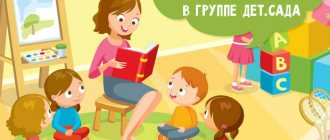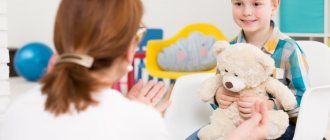Anthony Hopkins, Bruce Willis and Marilyn Monroe - all these people are united not only by worldwide fame. As children, Hollywood actors, whose films have already become cinema classics, suffered from stuttering. And speech therapists helped cinema stars overcome this illness and become successful. International Day of Speech Professionals is celebrated on November 14th. It is also celebrated in Moscow. More than three and a half thousand speech therapists work in the capital's educational institutions. Read about why speech is not just about pronouncing sounds, how classical music helps develop hearing, and whether it is possible to stop stuttering, lisping, and burring in the material from mos.ru.
Who is a speech therapist? What is his job?
A speech therapist works at the intersection of medicine and pedagogy. If we delve deeper into structural issues, then speech therapy is part of special pedagogy, i.e. defectology. Although until the 60s of the last century it was part of medicine. In some countries, even now only a person with a medical education can be a speech therapist.
A speech therapist (see profession speech therapist) is a specialist in correcting speech disorders, and they occur in both children and adults; they can affect both oral and written speech, pronunciation and deep speech processes.
Essentially, a speech therapist is a coach, but not a sports coach, but a speech coach. If the problem is only in pronunciation, a speech therapist performs articulation exercises, teaches you to breathe correctly, and gives a massage. Helps to extract the correct sounds and trains their pronunciation - first separately, then in syllables, in words, etc., until these sounds are included in speech.
But diction is only the cosmetic side of the issue. Speech serves us to convey information, express thoughts and emotions.
Often parents do not realize that if at the age of three the child hardly speaks, uses fragments of words or gestures instead of phrases, they should not even go, but run to a speech therapist. Such a delay in speech development, if not corrected, will ruin the child’s life.
In this case, the speech therapist works on replenishing vocabulary, grammar, and coherent speech.
Speech therapy help is also needed for stuttering, anatomical disorders of the speech apparatus, etc.
Most speech problems are visible in childhood. But speech can be affected at any age - after an injury or stroke, for example. If a person has already had speech, a speech therapist helps to disinhibit it, and, if possible, return it to its former liveliness and richness.
When to visit a speech therapist - we focus on the baby’s age
In fact, there is no recommended age for preventive exercises with a doctor. You can start visiting a speech therapist by the end of the child’s first year of life. In order for the baby to start speaking on time, it is necessary to find out the degree of understanding of the speech of others, what psychological functions have already been developed, and which ones need to be stimulated.
Speech development has a clear time frame. In other words, at a certain age, a child must master certain things. If this does not happen, parents need to contact a specialist.
Standards:
- from 10 months – the child’s speech moves from babbling to conscious words;
- from 10 to 24 months – the baby begins to use phrases and speech structures;
- up to 5 years - the child begins to study the system of his native language - masters speech structure, vocabulary, and correct pronunciation.
What is the relationship between the work of a speech therapist and a neuropsychologist?
I would also add a neurologist to this list. The cause of speech disorders is often, although not always, neurological. For example, a child of about six wants to say “mousetrap”, but it turns out either “mousetrap” or “myfevofka”. For some reason everyone is having fun, but he doesn’t understand what’s wrong again. This is probably what it is - a violation of the innervation of the muscles responsible for articulation. And if you have porridge in your mouth, you don’t perceive someone else’s speech very clearly - these things are clearly related to each other. If, say, a child does not distinguish V and L by ear, he says wampa - without any ulterior motive. And everyone around again: “Ah! Oh! Come on, tell me correctly!” But he cannot say it correctly; for this he needs to develop phonemic awareness and train his language. In speech therapy terminology, such a disorder is called phonetic-phonemic underdevelopment. If you do not overcome it in time, your speech will not improve on its own, and in school you will also have mistakes in writing.
It happens that the diction itself is excellent, but the child stubbornly says “my jacket,” has difficulty remembering the words, or constantly reinterprets them. He just can’t remember that his friend’s name is Larisa, not Ralisa. The reason for this underdevelopment of speech may lie in the underdevelopment of speech centers in the brain. Stimulating them is primarily a medical problem, but it is also a job for neuropsychologists and speech therapists who are looking for workarounds. For example, what is not learned by ear can be supplemented with visual images, special logorhythmic exercises, etc. As a speech therapist, I teach such children to listen and hear, understand speech, describe, retell, answer questions, etc.
Speech disorders can be combined with mental retardation. Unlike mental retardation, it is most often surmountable, but this also requires the joint efforts of a neurologist, neuropsychologist and speech therapist.
Specialists also work together if speech is impaired as a result of a stroke or head injury.
The efforts of speech therapists are focused mainly on speech as such. Speech is impossible without normal brain function. She suffers if mental functions are suppressed or underdeveloped: attention, memory (especially speech-auditory memory), etc. The speech therapist also works on them, using special techniques. But to a much greater extent this applies to the work of a neuropsychologist. If, of course, he exists.
And a neuropathologist and neurosurgeon treat organic damage - the main cause of speech impairment.
It happens that problems with the vocal or articulatory apparatus interfere with normal speech. For example, there is a cleft in the palate, it makes the voice nasal, and diction also suffers. This is rhinolalia, its causes are eliminated by a maxillofacial surgeon. A speech therapist helps to bring the speech apparatus into working condition as soon as possible after surgery.
There are many options for speech disorders. Regardless of the reason, they cannot be overcome by fragmentary training. They require multifaceted, complex work.
Speech therapy games and exercises for non-speaking children.
Didactic games and exercises
with non-speaking children
Developed by:
Deneka T.P.
loop teacher
2021
Imitation is an indispensable condition for mastering speech. But for a child to start talking on his own initiative, he must develop a need for this, a desire to say something...
Therefore, it is especially important to establish close contact with such children and raise their emotional state. As a rule, these children are inactive in general classes, require additional influences, cannot concentrate, and therefore need special conditions for the formation of attention.
At first, I pair such children with other children for classes, with those whose speech is somewhat better developed, but not so much so that they can, as they say, “overwhelm” a poorly speaking child with their skills. This can be a small group of no more than 3 people.
The leading form of classes is gaming. A prerequisite for impact is repeated repetition of the same material.
It is important not to scare away the baby with persistent “say”, “repeat”
, strictly exclude these expressions from your communication with such children.
I advise you to better use various games with a toy that interests the child.
Games to
develop speech understanding.
The main task of exposure is the accumulation of passive vocabulary. Children are asked to remember what they are called:
-their toys,
-body parts (legs, arms, head, eyes, ears, mouth, nose),
- names of actions that the child performs himself (sleeping, eating, sitting, standing, walking, running, jumping, playing, walking, cleaning, cleaning, washing, etc.).
Learning words denoting people from the child’s immediate environment.
Select photographs of family members, show them to the child, name the family members, ask the child to show them himself.
Ask your child questions: - Where is mom? - Where is Dad? - Where is the woman? - Where is uncle? Etc.
Play with your child :
(child shows parts of the body) Lera runs cheerfully towards her mother along the path, And for this our Lera needs (legs). Lera takes two or three berries, and for this our Lera needs (handles). Lera listens in the forest to the cuckoos singing, and for this our Lera needs (ears). Lera will draw. Where, what colors? And for this our Lera needs (eyes).
Games for
the development of auditory attention.
Game "Who will hear what"?
Goal: accumulation of vocabulary and development of phrasal speech.
Equipment: screen, various sounding objects: bell, hammer, rattle with pebbles or peas, trumpet, etc.
Description of the game. The teacher behind the screen knocks with a hammer, rings a bell, etc., and the children must guess what object produced the sound. Sounds should be clear and contrasting.
Game "Find the toy".
Goal: development of coordination of movements.
Equipment: small bright toy or doll.
Description of the game.
Option 1.
The children stand in a semicircle. The teacher shows the toy that they will hide. The leading child either leaves the room, or steps aside and turns away, and at this time the teacher hides a toy behind one of the children’s backs. At the signal “It’s time,” the driver goes to the children, who quietly clap their hands. As the driver approaches the child who has the toy hidden, the children clap louder; if he moves away, the clapping subsides. Based on the strength of the sound, the child guesses who he should approach. After the toy is found, another child is assigned as the driver.
Option 2.
Children sit on chairs in a semicircle. One child leads (he goes into another room or turns away). The teacher hides the doll. At the signal, the driver enters, and the children say to him:
Doll Tanya ran away
Vova, Vova, look,
When you find her, feel free to
Dance with our Tanya.
If the driver ends up in the place where the doll is hidden, the children clap their hands loudly; if he moves away, the clapping subsides.
The child finds a doll and dances with it, all the children clap their hands.
Game "Blind Man's Bluff with a Voice".
Goal: find a voice mate and determine the direction of the sound in space.
Equipment: bandages.
Description of the game. The driver is blindfolded and must catch one of the running children. Children quietly move or run from one place to another (bark, crow like a rooster, crow, call the driver by name). If the driver catches someone, the person caught must vote, and the driver guesses who he caught.
Game "Where did they call"?
Purpose: determining the direction of sound.
Equipment: bell (or bell, or pipe, or tambourine, etc.).
Description of the game.
Children sit in groups in different parts of the room, each group has a sounding instrument. The driver is selected. He is asked to close his eyes and guess where they called, and show the direction with his hand. If the child correctly indicates the direction, the teacher says: “It’s time,” and the driver opens his eyes. The one who called stands up and shows a bell or a pipe. If the driver indicates the wrong direction, he drives again until he guesses right.
Articulation, finger, breathing exercises.
Lexical topic “Winter”. Articulatory.
Exercise "Scapula". Open your mouth slightly and place a wide tongue on your lower lip. Hold in this position for a count of 1 to 5.
Respiratory.
“Blow a snowball from your palm” (cotton ball or paper snowflakes).
Finger game.
"Snowball"
One, two, three, four, (curl your fingers)
You and I made a snowball (
they “sculpt” it by changing the position of the palms)
Round, strong, very smooth, ( they squeeze their palms together)
And very, very unsweetened.
( they shake their finger)
One – we’ll throw it, two – we’ll catch it, (
look up, throw it and catch an imaginary snowball)
Three – we’ll drop it (
they “drop” an imaginary snowball)
And... we’ll break it.
( stomp)
Games to
clarify and expand passive
vocabulary on lexical topics.
Lexical topic: “Transport”
Game "What does the plane do?"
Goal: expanding the vocabulary of verbs, forming ideas about the subject.
Equipment. Subjects on the lexical topic being studied.
Content. An adult invites one of the children to pick up an object (for example, a toy airplane) and show what this object can do, what can be done with it. The child performs actions, and the adult asks the question to each of them: “What does the plane do? What are you doing with the plane? (the plane is standing, traveling, taking off, flying, landing, landing, falling; I take the plane, carry it, hold it, land it). If there is no correct answer, the child repeats the words after the adult, first individually, and then in chorus with all the children in the subgroup.
Examination of objects (their images) with missing parts.
Goal: expanding the volume of the dictionary with the names of parts of objects, forming ideas about the functions of parts of objects, developing logical thinking.
Equipment: objects (or images of them) with missing parts (a truck without a body, a boat without oars, a helicopter without a propeller), etc.
Content.
The adult draws the children's attention to the missing part of the object, asks the children to name it correctly, and also think about the consequences of such a phenomenon. For example, when looking at a truck (or a picture of it) with a missing body, an adult asks questions: “What is the truck missing? Will the truck be able to transport various loads without a body? What is the body for?
Game "Funny Cars".
Goal: teaching children to use prepositions and prefixed verbs in speech.
Equipment: playing field with roads, garage, bridge, etc., made using the appliqué method. Assembled toy cars from kinder - surprise.
Progress of the game
The game is preceded by a conversation about the road and transport. 5-6 cars are placed on the playing field (according to the number of players). The teacher suggests examining and describing the location of the cars on the playing field.
For example: behind the garage, under a bridge, on a hill.
If the children find it difficult, the teacher clearly pronounces the necessary phrases, highlighting prepositions, and asks them to repeat the text.
Players change the location of the cars and make up proposals at the “demand” of the teacher. The stop signal is the sound of a whistle or the gesture of a “traffic controller” with a toy baton.
Games for
the formation of phrasal speech.
At the first stage, identical grammatical structures are practiced, in which characters (“Dad is sleeping,” “Mom is sleeping,” “The dog is sleeping”) and actions (“Dad is sleeping,” “Dad is eating,” “Daddy is drinking”) are replaced.
Use as techniques looking at folding books, toys in a dry pool, in boxes wrapped in paper, etc.
The main thing is to attract attention, evoke an emotional reaction, expressed by interjections “Ay!”, “Oh!”, “Wow!”, and to induce speech imitation.
Various types of hide and seek: looking for a toy, part of the body, the child himself; looking at family photographs.
Game "Hide and Seek".
Goal: stimulation of pronouncing the word “Here” or the phrases “Here he is, here she is.”
The adult shows the child a piece of candy, a ball, a raisin, or something else that the child would be interested in receiving. Then he hides this object in his fist and puts both fists behind his back, after which he invites the child to guess in which fist it is hidden. “Guess where the candy is!” That's right, here (here she is)! Where is the candy - here!” The adult very emotionally pronounces the word “Here,” encouraging the child to do the same. Then the child hides the object, when the adult guesses, the child will need to say “Here!” The game “hide and seek” can be played in another way: throw a transparent scarf over the child’s head and ask “Where is Vanya? - Here is Vanya, who is here (the child can say his name or say “I”).” You can also hide a doll under a scarf, which needs to be given simple names: Katya, Vanya, Tata, Olya. The child needs to be given the task “Hide, find.” These games are also aimed at developing the child's understanding of speech, including verbs.
Game "Dress the doll"
Even such a “difficult” process for a child as dressing can be turned into an educational game. To do this, you just need to accompany all your actions with comments and start dressing with toys.
Lay out the pre-selected clothes and invite your child to help the doll get dressed.
To do this, ask to find the desired item:
“Find a dress (shirt, shorts, socks).”
When the child completes the task, say: “Let’s dress the doll.”
After the doll is wearing the desired item of clothing, comment: “We put on the dress. Doll in a dress."
You can dress the child himself in the same way. Don't forget to smile and encourage your child, be in a good mood and get dressed faster, and it will be easier to master correct speech.
Game "Locate the toy."
Goal: development of speech breathing. Consolidating the ability to construct a detailed phrase.
Equipment: toys (car, pyramid, ball, bear, doll) and others.
Description of the game. The teacher lays out various children's toys on the table in one row. Calling the child, he asks him: “Between which toys is the pyramid standing?” the child must give a complete answer: “The pyramid stands between the car and the ball.” After two or three answers, the teacher changes places of the toys. Gradually, when repeating the game, toys can be replaced with others one by one.
Methodical instructions. Before playing the game, the teacher reminds the children that they need to speak slowly, expressively, without separating one word from another with pauses, and speak the entire phrase as one long word. You must answer the question with a complete answer, for example: “The ball lies between the doll and the bear.” The one who answers correctly receives a forfeit. Then the winner is determined.
Game "Come up with a phrase."
Goal: development of phrasal speech. Correct construction of sentences.
Equipment: plot pictures from the “What We Do” lotto.
Description of the game. One scene picture is shown. The teacher comes up with a short phrase (of two or three words) based on it, then invites the children to add one new word to his phrase. Each child called extends the phrase by one more word.
For example, the teacher says: Tanya is playing. The child repeats the sentence: Tanya plays and adds on the street. The next one repeats: Tanya plays outside and adds in the sandbox.
The winner is the one who comes up with the last word to the sentence and pronounces the entire phrase correctly. Short phrases (three or four words) are pronounced in one exhalation, and long ones with a pause after three or four words. When children master the rules of the game, you can invite them to invent and lengthen phrases without pictures.
Game "Magic Mirror".
Goal: development of rhythmic, expressive speech and coordination of movements.
Description of the game. Children stand in a circle or sit on chairs. The driver approaches one of the guys and says:
Come on, look at the mirror!
Repeat everything to us correctly!
I will stand in front of you
Repeat everything after me!
The driver pronounces any phrase, accompanying it with any movements. The one to whom he addressed must accurately repeat both the phrase and the movement. If a child makes a mistake, he is eliminated from the game. The new driver is the one who completes everything without mistakes. The teacher monitors the correctness of breathing pauses and phrasal speech of children.
Games for
the development of mental processes.
We conduct games corresponding to the lexical topic of the week.
Lexical topic: “Wild animals.”
Game "Fourth wheel"
(based on pictures or toys of wild animals + a toy not related to wild animals).
Goal: development of logical thinking.
Lexical topic: “Toys.”
The game "What's missing?"
with these toys.
Goal: development of attention.
Lexical topic: “Transport”.
Game "Remember the cars."
(2-4 vehicle toys are displayed on the table. The child is given time to look at them carefully. Then the toys are put away in a common box with other toys. The child, from memory, places those toys that were displayed on the table).
Goal: memory development.
Lexical topic: “Poultry”.
Game "Feed the birds".
(paper silhouettes of poultry and worms of different colors).
Goal: development of imagination.
Game "In the garden, in the vegetable garden."
Goal: learn to group vegetables and fruits, consolidate their names.
Equipment: flannelgraph or magnetic board with images of a tree and a bed, flat figures of an apple, orange, pear, potato, cabbage, onion or others.
Move.
The teacher explains that apples, pears and oranges are tasty and sweet. This is fruit. Fruits grow on a tree. Potatoes, cabbage, and onions are not sweet, but very healthy. These are vegetables. Vegetables grow in the garden. Then he invites the child to place the fruits on the tree and the vegetables in the garden. The child completes the task, and the teacher activates his speech with the help of questions: “What is this? (apple). An apple is a fruit. Repeat. Where do fruits grow? (on a tree)”, etc.
The game "What's missing?"
Goal: expanding the vocabulary, developing visual memory.
Equipment: a set of subject pictures on the topic.
Content.
Medium level of difficulty.
An adult demonstrates and names 5–6 pictures. After the picture disappears, children remember the object and the word by which it was named.
High level of difficulty.
The number of pictures increases to 7 - 8. In the task, along with common words on the topic, less commonly used words are used. Children themselves name the pictures presented to adults. After one image disappears, they remember the object and the word by which it was named.
To stimulate the appearance of speech, I use a variety of methodological techniques:
· dramatizations (poems, dialogues, fairy tales);
· alternative questions, for example: “Which toy should I give you, a bunny or a doll? What should I give you - a cup or a spoon? What do you want – draw or play?” - in this formulation of the question, the child hears and can use the hint and repeat the word he needs;
· communication while running errands, for example, after putting an object on a high shelf, for example, a dog, asking the child to bring it. Since the child cannot reach the object, he will have to somehow make contact. Adult: “What do you want? A dog? How should I ask? “Give me the dog” (the child receives a toy as a reward);
· toy theater, finger theater (“Who lives in the house?”, tea party for dolls);
· imitation and onomatopoeia (“Geese-geese”, “Bunny”, imitation of animal sounds);
· negotiating nursery rhymes; fairy tales; poems;
· memorizing simple rhymes;
Logorhythmic exercises.
Acquiring speech confidence and the desire to speak is also helped by the child’s participation in matinees.
. Even a couple of words spoken on it helps the child straighten his shoulders, and he becomes motivated for speech classes. Here, the quality of sound pronunciation is inferior to the goal of developing bold speech behavior and the desire to perform. And the matinee itself becomes functional training for beginners to speak.
It is very important to encourage the child's desire to speak. One form of stimulation of this need is, naturally, the praise of an adult as positive reinforcement of the child’s achievements. Therefore, do not skimp on good words and joyful exclamations!
Where does a speech therapist work? Is a flexible schedule possible?
Speech therapists work in educational and medical institutions. A speech therapist in education is called a teacher-speech therapist, in medicine - simply a speech therapist.
Speech therapists in medicine work in clinics and departments for people with speech pathologies, with consequences of stroke, in maxillofacial surgery clinics, etc. They conduct appointments in clinics, work in orphanages, etc.
The salaries of speech therapist teachers in some kindergartens, mass and correctional schools are still maintained. And also in commercial development centers. A free schedule is possible if the speech therapist works exclusively privately. The salary of a speech therapist is 20 hours per week. Some speech therapists work in two places at once: in the morning in one place, and in the afternoon in another. If desired, you can combine work in an institution with private practice. Usually these are classes with wards at home, which, let me tell you, is quite difficult.
What is bad about being a speech therapist?
This is working with children and their parents, which in itself is not bad, but difficult. It is difficult to find a common language with a child if he is already so overwhelmed that he is afraid to talk at all. It is difficult to call a child to order, especially if he does not understand speech well, if his memory is weak, his attention is unstable.
It is difficult to convey your recommendations to parents, who often do not understand the seriousness of the problem. Yes, they want the child to finally learn to speak. But first of all, they are concerned with those very “defects of fiction”, and not with speech as a whole. The more severe the violation, the more reluctant they are to complete homework.
Now I work at a school for children with severe and multiple developmental disabilities. Their speech difficulties are a consequence of motor and intellectual impairments. Many of our students have behavioral problems, so-called disorders of the emotional-volitional sphere. To win over such a child and set him up for work requires diabolical ingenuity and absolute dedication. Speech pathologist, speech therapist, psychologist, subject teachers - we all work in the same team.
It's difficult, but we like it.
The main misconceptions of parents:
- A child’s speech is formed before the age of 5, so there is no point in contacting a specialist earlier - not all parents can objectively assess the development of a child’s speech. Therefore, it is important to contact a speech therapist for a reliable analysis of the child’s development, whose disorders can begin even at a very young age;
- incorrect pronunciation will be eliminated by itself - some speech imperfections (replacing complex articles with simpler ones) can indeed exhaust themselves with age. However, if by the age of 4 the problem still remains, then it must be solved with the help of professional help;
- if the child does not speak at all, then a speech therapist will not help here - a speech therapist deals with speech production in the broadest understanding of the word. His work is carried out at all levels of the speech system, including the psychological aspect;
- You can take care of your child without outside help - many parents who decide to teach their child personally do not even suspect that their own phonetics are not entirely correct. The speech therapist will show you correct pronunciation and effective training exercises;
- To achieve results, 1-2 sessions with a speech therapist are enough - the course of speech correction is determined on an individual basis. One child will really only need a couple of lessons, while another child will need long courses to correct the problem.
You and your children can undergo all studies and necessary consultations at the Caring Doctor Clinic. You can make an appointment by calling 244-88-74, 8-951-661-77-44
Speech therapist at the Caring Doctor clinic
Who absolutely cannot do this job?
An irritable person, gloomy, self-righteous, a person prone to violence (including psychological violence) will not be able to work as a speech therapist.
You must be able to quickly respond to a constantly changing situation, adapt your methods to the child, and not the child to the methods. There are no universal methods and techniques, no master keys that fit all locks. We need flexibility.
You need artistry, you need playfulness. Although no one will give you an Oscar for this.
When you sit one-on-one with a student, you must be able to be “here and now” and put aside everything that is not related to this communication. If you are not ready to peer and listen closely to your students, nothing will work.









